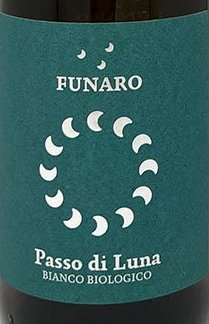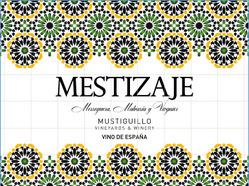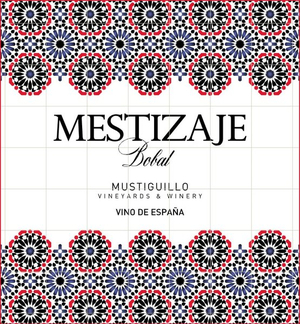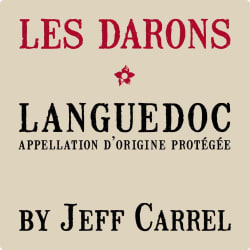Funaro Passo di Luna bianco
MUSTIGUILLO MESTIJAZE BLANCO
Lascaux Rosé L’Eclat
VULLIEN MONDEUSE
MUSTIGUILLO MESTIJAZE TINTO
Les Darrons rouge
 Funaro Passo di Luna bianco – organic and biodynamic
Funaro Passo di Luna bianco – organic and biodynamic
Funaro is a family-owned organic winery in Santa Ninfa in the Trapani province on the Italian island of Sicily (‘Sicilia’). The estate was founded in 2003 when the Funaro siblings – Tiziana, Clemente, and Giacomo – decided to make wine from vineyards that had been in their family for three generations. Wines are made under the Terre Siciliane IGT.
They farm 85 acres of which 60 acres are vineyards (on two sites–see below) and 15 acres are olives, plus arable land, vegetable plots, and fruit orchards.
The Funaro enterprise consists of two farm estates in Western Sicily, not far from the coastal towns of Marsala and Trapani.
In addition to building an eco-friendly winery facility complete with solar electricity and a natural wastewater recycling system, they obtained organic certification for their vineyards, olive groves, and orchards in 2011.
Fermented in stainless steel and picked during the cooler hours of the day to retain freshness. Citrusy and floral on the nose, with honeysuckle, zippy red grapefruit, and almond skins. Very fruit-driven and aromatic, a perfect refreshing wine for the hot summer months!
This steely, crisp, floral white combines Insolia and Zibbibo is fermented and aged only in steel tanks to preserve freshness. Hardly just a “quaffer,” however, there’s some nice texture to this wine, a juicy midpalate with notes of peach, nectarine, white flowers, and a hint of chalk. Refreshing, mineral, and delicious—perfect for pairing with grilled octopus or Sicilian-style tuna with blood oranges.
 MUSTIGUILLO MESTIJAZE BLANCO – Organic and Biodynamic
MUSTIGUILLO MESTIJAZE BLANCO – Organic and Biodynamic
In 2017 I visited Spain on a wine-buying trip with the folks at Valkyrie Imports; our second stop was in Utiel, in Valencia, to meet with Toni Sarrion, the proprietor and winemaker at Mustiguillo, an organic/biodynamic winery specializing in native grapes – mainly Merseguera for the whites and Bobal for the reds.
Tony is a champion of resurrecting these almost lost grapes. His Merseguera grapes come from plots planted at 3000 feet above sea level that he grafted over from Bobal vines that couldn’t adapt to the higher altitude.
His entry-level blend is called Mestijaze for both the red and white, and the white is a blend of 75% Merseguera, with lesser amounts of Viognier and Malvasia. The wine undergoes native yeast fermentation in tank and is aged sur lies in stainless steel.
The Viognier is immediately apparent on the nose with apricot, tropical fruit, and honey while underlying notes of white peach, scented flowers, and citrus hints creep in from the Merseguera. The tightwire balance between the fleshy Viognier/Malvasia and taut Merseguera continues with a fresh, fruity, and floral attack and an unctuous mid-palate that is kept in check by bracing acidity. Truly one of a kind, Mestizaje shows its unique personality is this pleasant, crispy, imminently friendly wine Mustiguillo is an organic/biodynamic Spanish winery specializing in native grapes – mainly Merseguera for the whites and Bobal for the reds.
Lascaux Rosé L’Eclat de garrigue – Organic and biodynamic
The vineyards of Château de Lascaux have been in the family for thirteen generations. The name of the domain, “Lascaux” comes from a limestone specific to the domain’s vineyard sites.
Jean-Benoît Cavalier took over the property in 1984, just after finishing a degree in Agricultural Engineering. In 1990, he consolidated the vineyards, restructured the ancient cellars, and created the official domain, Château de Lascaux. Today, over twenty-five years later, the domain has expanded from 60 to 210 acres of vineyards, surrounded by 750 acres of forest, filled with green oaks, pines, and garrigue**.
The quiet isolation of this part of the region, coupled with its proximity to both the sea and the mountains, makes this microclimate so unique. It is nestled along the foothills of the Cevennes, a mountain range that sits in the heart of the Midi. These foothills protect the vines from the cool Mistral and Tramontagne winds and bring more rain to an otherwise dry climate. That this temperate zone brings a long, slow ripening of the grapes only adds to the wines’ complexity. The stony soil lends finesse and freshness to his wines, giving the reds greater aging potential than Syrah-based wines grown in other Languedoc soils.
The proliferation of garrique certainly is reflected in the aromatics, where notes of laurel, thyme, rosemary, réglisse, and mint are present in the wines. Jean-Benoît is passionate about supporting the richness and diversity of this ecosystem, so the domain’s conversion to organic viticulture was a logical choice. There is a freshness and purity, finesse, and complexity in the Lascaux wines that is rare in this wild landscape. The consistency of the winemaking, the quality of their wines, and the great values they present make this domain a treasure.
L’éclat de Garrigue is a blend of Cinsault, which brings brightness and balance, Grenache, which gives a silky mouthfeel and Syrah, which gives the wine finesse and delicious fruity notes
The grapes are harvested mechanically and quite early in the morning depending on the plot. Once harvested, the grapes are partially destemmed and then cold-pressed. This is followed by a selection of juices and a cold settling without excess before maturing in stainless steel vats for four to five months
VULLIEN MONDEUSE (ORGANIC)
The eastern French region of the Savoie is one of the most exciting wine regions on the planet, and it’s near the top of my must-see places to go.
Savoie is blessed —a cool mountain climate on a warming planet, and about as idyllic a place to grow and make wine as one could ask for. Known more for skiing and other outdoor pursuits, the Savoie is not so well known as a wine-producing area, though within the area known as the Combe de Savoie, there are a handful of the best producers.
With little-known grape varieties such as Jacquère, Mondeuse, and Altesse nestling alongside Pinot Noir, Chardonnay, and Gamay, the world of Savoie wines begs to be explored. I was astonished at the quality of Jean Vullien’s wines, especially when compared to most other producers in the area.
How were they producing such high-quality, clean, and fresh wines when so many others clearly couldn’t? It transpired that Jean Vullien learned viticulture in his native Bordeaux and his two sons, David and Olivier graduated from renowned wine college, La Viti in Beaune.
The region’s best come from a boomerang-shaped string of hillside villages between Grenoble and Albertville (site of the 1992 Winter Olympics) called the Combe de Savoie (Combe is a word of Celtic origin meaning a sharp, deep valley). Jean Vullien and his two sons, David and Olivier, tend 69 acres on the Combe in the villages of Chignin, Montmélian, Arbin, St-Jean de la Porte, and their hometown of Fréterive.
The Domain’s holdings include all of the region’s indigenous grape varieties, as well as strategically-placed parcels of Chardonnay and Pinot Noir. The wines range from a crisp, lemon and mineral Jacquère-based white that British wine author Andrew Jefford would categorize as “Muscadet of the Alps” to complex floral and spiced reds made from Mondeuse. In recent years, David and Olivier have also earned a reputation for their excellent Méthode Traditionelle sparkling wines. Though the Vulliens have been making wine for 40 years, the family is perhaps best known as a leader in another segment of the wine industry.
Since 1890, Vullien Pépinière Viticole (vine nursery) has been supplying young vines to growers throughout France. In fact, they were the source for about 25% of the Chardonnay planted in Chablis after the ravages of phylloxera.
Climatically, the Savoie is more challenged than many other wine producing areas of France, hence the different native grape varieties. Jacquere, which is widely available, drinks like a dry Sauvignon Blanc and is superb with shellfish and seafood. Gamay, which is the principal variety of Beaujolais, is comfortable in this slightly cooler climate too. They are succulent, light and full of fruit with the Gamay Rose airing more on the side of a dry rose. Both work extremely well with Savioe dishes such as raclette, tartiflette, tarte flambee (flammekueche) and cheese fondues.
Their Mondeuse bottling is a winner- grown on the dark Jurassic limestone and black marl soils of Savoie. The grapes come from 16 acres of sustainably farmed vines, including parcels in the crus of St-Jean-de-la-Porte and Arbin. All grapes are de-stemmed and after fermentation, the wine is aged in 100% French oak barrels for 12 months.
The resultant wine is wonderfully complex with bright floral and spice notes to complement the fresh red and black fruit flavors. Pair with chili or a hearty beef stew. Mondeuse is the mountain cousin of Northern Rhône Syrah—literally, in the sense that DNA analysis has linked it to Syrah, and figuratively, in that it drinks like the prettier, wilder, barefoot version bedecked in Alpine wildflowers.
 MUSTIGUILLO MESTIJAZE TINTO – organic and biodynamic
MUSTIGUILLO MESTIJAZE TINTO – organic and biodynamic
Bobal is one of the greatest and most under-rated Spanish grape varieties, and is now on the cusp of a renaissance in the Mediterranean vineyards to mirror that of the Mencia varietal in Bierzo and other parts of North-West Spain.
Mustiguillo is a family project, dedicated to organic viticulture and the pursuit of elegance and finesse rather than excess oak and the like. A well-rehearsed mantra maybe, but one that does not have many adherents of such pedigree. Consider this a reintroduction to Bobal, and its champion, Toni Sarrion. In the late 1990’s, Toni began a one-man crusade to save this indigenous variety and coax it from obscurity and rusticity to the forefront of truly world-class wines.
Ever evolving and pushing the quality level forward, Mustiguillo has moved away from the use of overt American oak as seen in previous vintages in favor of concrete and French oak for wines of finesse and balance, realizing the potential of Bobal from the unique terroir of El Terrerazo. Mustiguillo was recognized for its extraordinary efforts by Wine & Spirits as one of the Top 100 Wineries of 2012.
The varieties are vinified separately and undergo malolactic in a mixture of oak and stainless steel. The final blend spends 11 months in French oak.
This 2019 is not merely a tangy, smoky, lip-smacking joy to drink now but is a sneakily complex wine that will likely age nicely over the short term. The Vullien family holdings include 16 acres of Mondeuse in St Jean de la Porte and Arbin—the only two crus within Savoie that produce exclusively red wine from Mondeuse in a region otherwise dominated by whites.
 Les Darrons by jeff carrell rouge – Sustainable
Les Darrons by jeff carrell rouge – Sustainable
Winemaker and grower Jeff Carrel studied Oenology in France, vinifying in the Loire, Alsace, and the Languedoc regions where he took up a role as Technical Director for a Bordeaux wine merchant before taking complete charge of the domaine. Today Jeff works mainly in Languedoc Roussillon but also in Bordeaux, Beaujolais and Burgundy. Jeff develops original wines with precision that deliver a sense of place at a great value. An accessible wine with loads of character, “Les Darons” is packed with ripe, red and dark fruit aromas, with plenty of spice and a streak of underlying minerality.
Enjoy this classic, unoaked red with a wide range of everyday meals. This wine is made up of 75% Grenache and 5% Carignan, harvested by hand, and 20% Syrah. The grapes are destemmed and crushed before being blended, with extraction by pigeage. They come from old vines, hence the name “les darons” which means “the fathers”.
90-92 points, Jeb Dunnuck: “The 2018 Languedoc Les Darons checks in as a blend of 75% old vine Grenache, 20% Syrah, and 5% Carignan that’s from a mix of the La Clape, Agly Valley, Minervois, Saint Chinian, and Taileran regions of the Languedoc and Roussillon. This elegant, beautifully perfumed red has sweet cherry and black raspberry fruits intermixed with ample spice, candied violets, and ground pepper. It’s elegant, silky and seamless on the palate, with beautiful purity and an upfront, charming style.”



